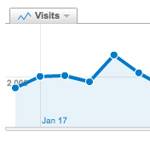Sure, your company’s website could be improved. But with time and resources in such short supply, how do businesses know where to focus their energy? One answer is A/B testing, or the practice of publishing two variations of a Web page and measuring which one performs better.

A/B testing has been used by large enterprises for years. Amazon uses it to optimize product listing pages. Google was once criticized by an outgoing designer for relying too heavily on data-driven methods like this.
In general, A/B testing involves segmenting site traffic into different groups and showing each group a different version of the same landing page. Perhaps one page will contain different headline text or a different call-to-action button style. Another page will serve as the “goal” for the desired conversion. For example, a newsletter sign-up confirmation page or the final check-out page in an e-commerce shopping cart. The software will figure out which version of the page resulted in more clicks or conversions.
A/B testing hasn’t historically been cheap, but in recent years, more affordable solutions have become available, enabling smaller businesses to take advantage of it. Below are a few options worth checking out.
Google Website Optimizer
Like so many things in life, Google offers a free tool for A/B and multivariate testing. Google Website Optimizer is a popular tool that lets site owners set up simple A/B tests or more complex experiments involving multiple variables. Setting up experiments in the back-end interface is a pretty straight-forward process. Of course, you’ll need to build the alternate pages and drop a unique snippet of JavaScript into each one, as well as into the conversion goal page.
Google Website Optimizer integrates with AdWords and like most of Google’s online marketing products, has a wealth of documentation and tutorials available.
Optimizely
Unlike Google’s solution, Optimizely is not free, but it’s worth paying for if you can spring for it. It features a browser-based WYSIWYG page editor for creating alternate versions of a given page. The only modification of your own site that’s required is to drop a single line of code before the closing tag.
Once an experiment starts running, the data is available in real-time, which can be fascinating to watch. This is one perk that Google Website Optimizer does not offer. Plans start at $19 a month.
SumoOptimize
Much like Optimizely, SumoOptimize offers a WYSIWYG page editor and real-time test results. The pricing is a little more palatable for small businesses, as it offers more plans, including a free one.
Have you had any luck with A/B testing? Let us know about your experience in the comments.
















